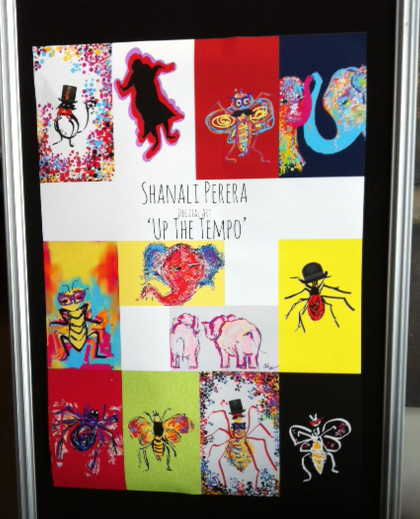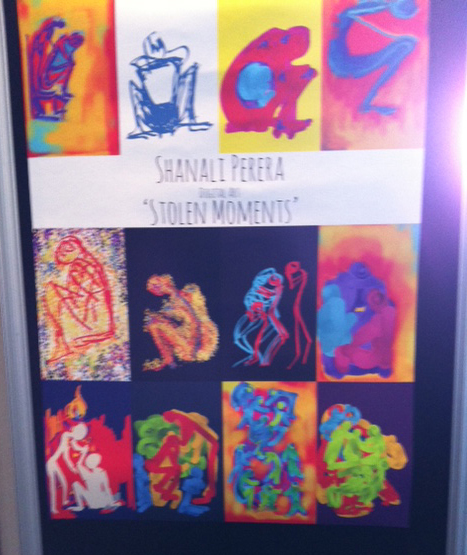Last Month Eve and Hannah met Rheumatology patient, Shanali Perera at the BSR conference in Glasgow. In this week’s guest blog, Shanali shares her experience of becoming a patient in her own speciality and how digital art therapy has supported her in taking control and managing her long-term condition.
Meet Shanali

I am currently a patient under the care of Rheumatology at Manchester Royal Infirmary. I was a Rheumatology specialist trainee prior to ill health retirement 4 years ago. In 2009, I embarked on an unexpected journey by becoming a patient in my own specialty. At the time, I was in my 2nd year of training. This has been a transformative experience both professionally and personally. I gained some valuable insights into a patient’s journey after 7 years of numerous A&E and hospital admissions coupled with multiple consultations from various disciplines. To face every day struggles of a patient seemed somewhat different when sitting on the opposite side of the desk for the first time. Diseases are a black and white reality to health providers as the focus falls mainly on diagnosis, classification and management. Where as the experience of illness is a reality with many shades of grey to the patient.
Chronic diseases can turn one’s lives upside down gradually changing the landscape of daily living. It overtakes life with its collateral insults often giving rise to chronic stress and depression. Losing self-esteem and control slowly creeps up, starting to affect everything you do. Feeling powerless most of the time becomes part and parcel with the variability in symptoms, the unpredictable course of the condition, the disruption of one’s previous routine and functional independence. With the balance tipping over gradually with work, financial constraints and home stresses, every aspect of your life is suddenly over shadowed with a new constant looming in the background – the condition/diagnosis/illness whatever you choose to name it. It doesn’t take long to start feeling isolated and stray off course, loosing sight of self-identity.
Art can be a refuge for coping with sudden changes from familiar to new unfamiliar aspects of daily routine. Creativity gives something to take control of and construct a positive identity. From my experience, adapting to find ways around limitations plays a key role in rebuilding confidence and progressing forward.


On repeated use of hands, they become numb, dead and painful. I found the use of digital medium my adaptation as it enabled me to use light touch with minimal effort and alternate hands. Less pain and fatigue became apparent in my hands and arms compared to using a paintbrush on canvas or charcoal on paper.

For me, artistic expression was a means of self-exploration to convey how I was feeling. This really helped me to keep the fun side alive and regain a degree of control. This newfound freedom to explore myself through the world of colours andcreative expression gave rise to my present work.
My aim is to utilise my work to engage interest in relevant parties towards the therapeutic benefits of creating and the positive impact this form of self-expression can have on a person with functional limitations due to Rheumatic/Musculoskeletal conditions affecting joints and muscles. Plus other conditions which cause functional limitations. Especially with the use of digital medium, how exploring the creative side to cope with daily challenges can be a constructive as well as an enjoyable pursuit given the plethora of life altering changes brought on by these conditions.
Art was a tool for positive reinforcement and reflective thinking for me. I managed to achieve a semblance of normality by starting to set more realistic goals and standards for me around my limitations. It certainly can be an integral part in healing and used as a non-medical aspect to self -management of long-term conditions.
It was indeed a fantastic experience meeting Eve and Hannah at the BSR conference in Glasgow. Thank you for supporting my work.
Thank you
Thank you for sharing your experiences with us Shanali. We were very inspired by Shanali’s journey and can see the power of using creative tools to take control and make positive changes. We hope to incorporate a special art session in our next patient workshop to support AKU patients explore new ways to manage their condition.
To see more of Shanali’s digital art, take a look at her website.
